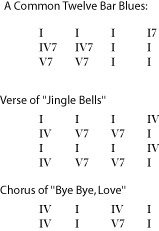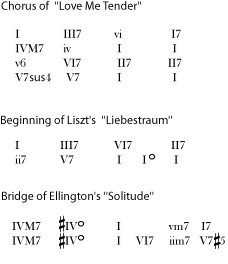| << Chapter < Page | Chapter >> Page > |
Even among the chords that naturally occur in a key signature, some are much more likely to be used than others. In most music, the most common chord is I. In Western music , I is the tonal center of the music, the chord that feels like the "home base" of the music. As the other two major chords in the key, IV and V are also likely to be very common. In fact, the most common added-note chord in most types of Western music is a V chord (the dominant chord ) with a minor seventh added (V7). It is so common that this particular flavor of seventh (a major chord with a minor seventh added) is often called a dominant seventh , regardless of whether the chord is being used as the V (the dominant) of the key. Whereas the I chord feels most strongly "at home", V7 gives the strongest feeling of "time to head home now". This is very useful for giving music a satisfying ending. Although it is much less common than the V7, the diminished vii chord (often with a diminished seventh added), is considered to be a harmonically unstable chord that strongly wants to resolve to I. Listen to these very short progressions and see how strongly each suggests that you must be in the key of C: C (major) chord(I) ; F chord to C chord (IV - I) ; G chord to C chord (V - I) ; G seventh chord to C chord (V7 - I) ; B diminished seventh chord to C chord (viidim7 - I) (Please see Cadence for more on this subject.)
Many folk songs and other simple tunes can be accompanied using only the I, IV and V (or V7) chords of a key, a fact greatly appreciated by many beginning guitar players. Look at some chord progressions from real music.

Typically, folk, blues, rock, marches, and Classical-era music is based on relatively straightforward chord progressions, but of course there are plenty of exceptions. Jazz and some pop styles tend to include many chords with added or altered notes. Romantic-era music also tends to use more complex chords in greater variety, and is very likely to use chords that are not in the key.


Notification Switch
Would you like to follow the 'Introduction to music theory' conversation and receive update notifications?